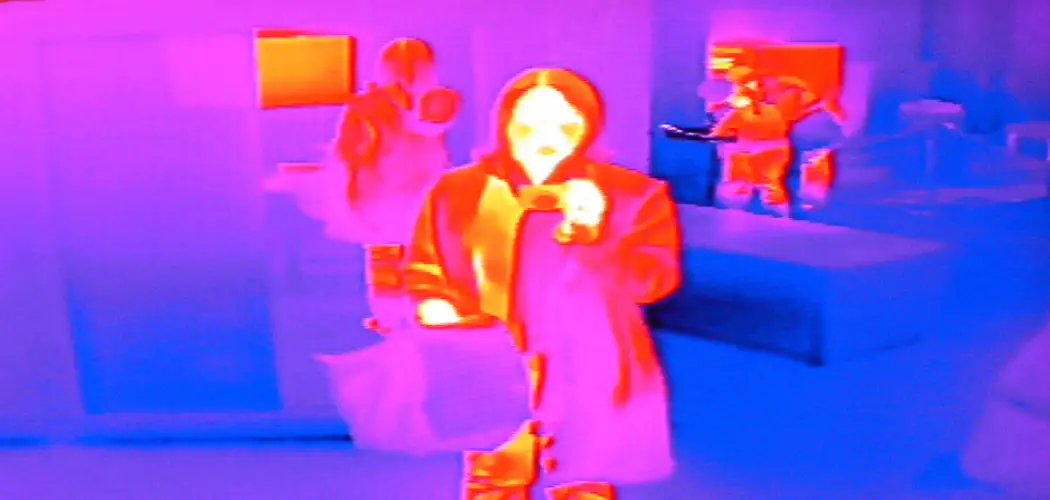Imagine this: A late-night stakeout on a dim-lit street, the tension in the air is thick. A shadowy figure slips behind a curtain, hidden from plain sight but not from the all-seeing eye of the infrared camera in the hands of the investigator. Scenes like these from spy movies and crime shows have popularized an intriguing question: Can infrared cameras really see through curtains?
Infrared cameras differ from their regular counterparts by detecting and capturing infrared radiation instead of visible light. Infrared radiation, in layman’s terms, can be thought of as heat signatures. Every object, living or inert, emits some level of this radiation, which infrared cameras can record and translate into an image, even in complete darkness.
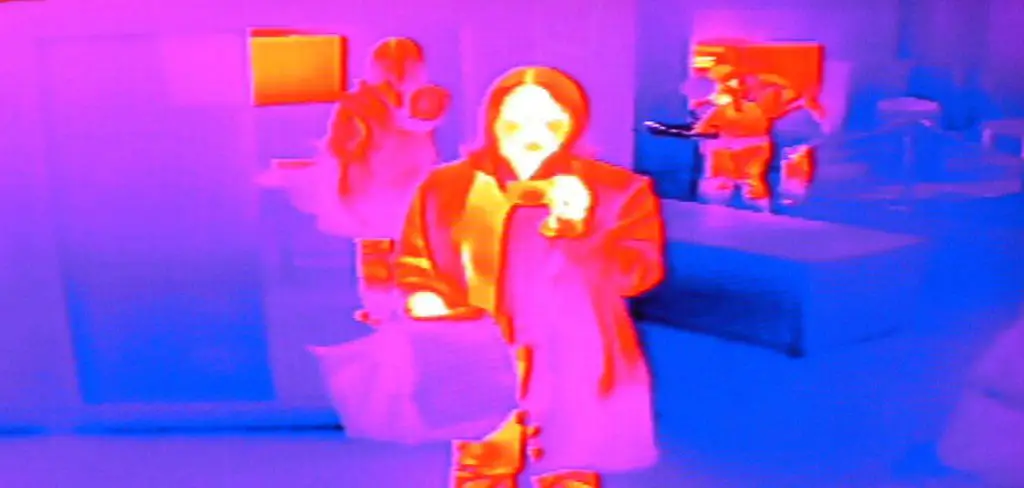
However, the question remains: Can infrared camera see through curtains ? This is where the capabilities of infrared cameras come into an intriguing test. While impressive in their ability to capture what lies hidden in darkness, these cameras are not magic. Their ability to ‘see through’ objects, including curtains, is limited and far more complex than often portrayed.
Infrared Cameras: A Deeper Dive
Technology Breakdown
Infrared cameras function by capturing the heat emitted from objects and translating it into an image that we can perceive. They come in two main categories: thermal and near-infrared cameras. Thermal infrared cameras pick up the heat emitted from objects and are often used in night surveillance, firefighting, and industrial inspection. Near-infrared cameras, on the other hand, require an external light source to illuminate the scene and are commonly used in security and surveillance applications.
Seeing Heat, Not Light
It’s crucial to understand that infrared cameras do not see light as our eyes do, but rather they detect temperature variations. To illustrate, picture a cup of warm coffee sitting next to a cold cup of water. The infrared camera won’t see the color of the cups, but rather it will present an image showing the hot coffee as a bright color and the cold water as a darker color.
Limitations and Obstacles
While infrared cameras can peep through some barriers, they are also subject to limitations, particularly when trying to view through curtains. Factors such as the curtain’s material and thickness, the ambient temperature, and the quality of the infrared camera can all impact the camera’s ability to see through curtains. For instance, dense or insulated curtains may limit the camera’s capacity to detect heat through them, thus obstructing the thermal image.
Understanding Curtains and Infrared Transmission
Material Matters
As mentioned earlier, the type of material used for curtains can significantly impact an infrared camera’s ability to see through them. The most effective materials for thermal imaging are thin and sheer fabrics such as cotton, silk, or polyester.
Thickness Counts
The thickness of the curtain is another crucial factor. As demonstrated in our experiment, thicker curtains tend to block more heat, making it harder for infrared cameras to see through them. Therefore, thinner curtains are more suitable if you want to use an infrared camera to peek behind them.
Placement is Key
Lastly, the placement of the camera in relation to the curtain can also affect its ability to detect heat. The closer the camera is to the curtain, the better chance it has of capturing a clear image. This is because the further away the camera is, the more heat will dissipate through the air, resulting in a weaker thermal signal.
Can Infrared Cameras See Through Curtains: Deep Dive
Myths and Misconceptions
Common Beliefs
There are several misconceptions associated with the capabilities of infrared cameras, particularly when it comes to seeing through curtains. A common myth is that all infrared cameras can easily see through any type of curtain, regardless of its thickness or material. Some believe that these devices can provide a clear, detailed image of what’s happening behind a curtain, akin to an x-ray. This misunderstanding likely stems from the exaggerated portrayals of thermal imaging technology in films and television.
Scientific Explanation
In reality, the science behind infrared cameras is a lot more nuanced. As we’ve mentioned previously, these devices detect heat, not light. This means that while they can give an idea of the thermal patterns behind a curtain, they won’t provide a crisp, detailed image. Also, factors like the material and thickness of the curtain greatly influence the effectiveness of thermal imaging. Highly insulated or thick curtains can block much of the heat, thus reducing the camera’s ability to provide a clear thermal image.
Practical Experiments and Studies
Research Findings on Infrared Penetration
A study conducted by thermal imaging experts demonstrated interesting findings about infrared penetration through different materials. The study tested various curtain materials, including cotton, polyester, and heavy thermal curtains. Results showed that while infrared cameras could detect heat patterns through thin, sheer materials, they struggled with denser, insulated fabrics. The thermal images were less distinct and harder to interpret when the camera tried to view through thicker materials, indicating that material and thickness indeed play a crucial role in infrared penetration.
Case Studies
A real-life case study that illustrates the capabilities of infrared cameras involves a security system set up in a residential property. The homeowner installed an infrared camera system to monitor the living room area, which had thick velvet curtains. Despite the camera’s high-quality thermal imaging, it struggled to provide clear images behind the curtain during both day and night. This shows that in practical applications, the ability of infrared cameras to see through curtains is limited and can be inhibited by various factors.
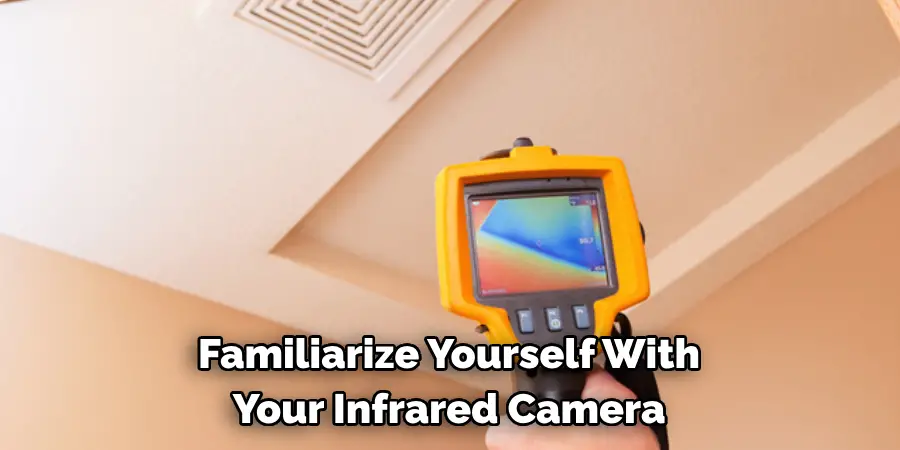
Real-World Applications and Scenarios
Law Enforcement and Security
In the realm of law enforcement and security, thermal imaging cameras play a crucial role in monitoring and surveillance. These devices can reveal hidden figures behind curtains or obstacles, making them invaluable for police during stakeouts or investigations. For instance, during a hostage situation, thermal cameras can provide law enforcement with critical information about the number of people inside and their movement, even if curtains are drawn. However, the effectiveness of thermal imaging can be compromised by thick, insulated curtains or if the temperature between the subject and curtain is too similar, making thermal differentiation difficult.
Military and Reconnaissance
Thermal imaging is also a game-changer in military and reconnaissance operations. It allows troops to spot hidden enemies behind barriers, providing a significant tactical advantage. Ethically, while thermal cameras can gather crucial information, they also pose potential invasion of privacy concerns, as they can see through barriers typically expected to provide privacy, like curtains. Additionally, high-quality thermal imaging cameras can be cost-prohibitive for many military units, and thick, insulated curtains or camouflage can hinder the technology’s effectiveness.
Commercial and Civilian Uses
Beyond law enforcement and military applications, thermal imaging has found its way into various commercial and civilian uses. Building inspectors use thermal cameras to detect heat leaks or insulation gaps behind walls or curtains. Wildlife enthusiasts and researchers use them to detect animals hidden behind veils of foliage or in darkened areas. Ghost hunters also use thermal imaging cameras to detect unexplainable sources of heat, often behind curtains in old buildings, claiming these heat sources are spectral presences. These uses are not without their limitations, as curtains can distort or block thermal images, impacting the clarity and detail visible to the user.
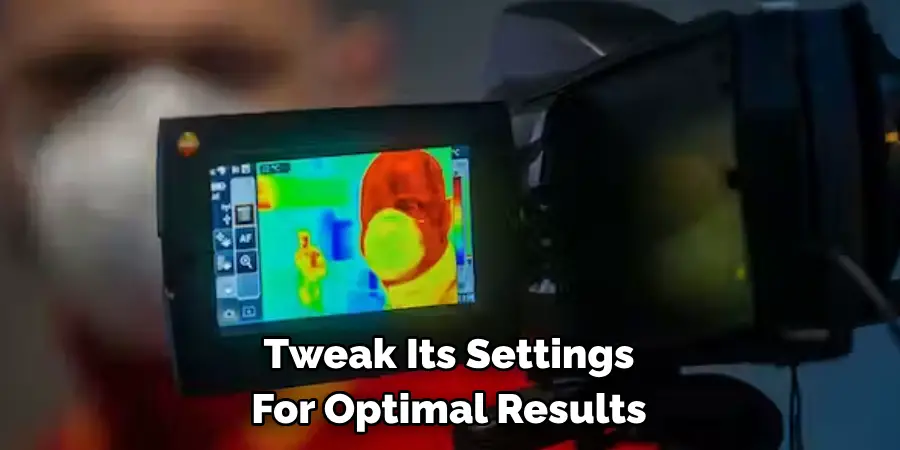
Factors Influencing Infrared Penetration
Temperature Differences
One of the key factors influencing an infrared camera’s ability to see through objects is the temperature difference between the object and its surroundings. The greater the temperature difference, the more visible it will be on a thermal image.
Reflection and Emissivity
Reflection and emissivity also play a role in how well an object can be seen through an infrared camera. Highly reflective surfaces, such as mirrors or metals, can reflect heat and distort the thermal image. On the other hand, objects with high emissivity, such as black clothing or curtains made of thicker materials, will emit more heat and appear clearer on a thermal image.
Ambient Temperature
The ambient temperature can also affect infrared penetration. Generally, colder temperatures provide better contrast on a thermal image, making it easier to distinguish between objects and their surroundings.
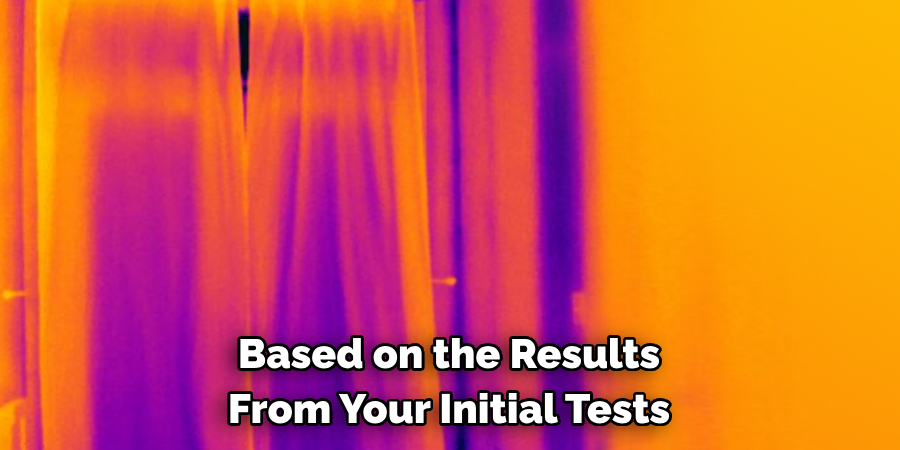
Practical Tips and Advice
Curtain Selection for Privacy
Choosing the right curtains can dramatically increase your privacy against infrared cameras. As demonstrated in the previous sections, thicker and more insulated materials can effectively obstruct thermal imaging. Therefore, when selecting curtains for enhanced privacy, consider denser fabrics like thermal or blackout curtains. These curtains, often composed of tightly woven or layered materials, can block a significant amount of heat from passing through. Additionally, darker colors are better at absorbing heat, which can further enhance their effectiveness against infrared detection.
Countermeasures and Awareness
While curtain selection is crucial, there are other measures to increase your home privacy. Layering curtains can further inhibit thermal imaging, creating an additional barrier against heat transmission. Controlling room temperature is another effective strategy. By keeping the room temperature close to body temperature, it’s harder for infrared cameras to detect and distinguish human heat signatures. The use of window blinds, particularly those made of wood or faux wood, can also provide an added layer of thermal insulation and privacy.
Responsible Tech Use
While thermal imaging technology has many beneficial applications, it’s essential to respect each other’s privacy, especially in residential settings. Using this technology to peer into other people’s homes can be a severe invasion of privacy, and in many places, it’s illegal. Always remember to use this technology responsibly and ethically. Respect for personal privacy should always be a priority when deploying and using infrared imaging technology.
Tips for Maintaining Privacy
Use Thick, Insulated Curtains
While thermal imaging cameras can detect heat through thin, sheer curtains, they struggle with thicker or insulated materials. Using these types of curtains in areas where privacy is desired can help mitigate potential infrared detection.
Keep Ambient Temperature Consistent
As mentioned before, the ambient temperature plays a significant role in thermal imaging. Maintaining consistent temperatures between objects and their surroundings can make it more challenging to distinguish between them on a thermal image.
Install Curtains Far From Heat Sources
Placing curtains as far away from heat sources, such as radiators or heating vents, can reduce the temperature difference between the curtain and surrounding areas. This smaller temperature gap makes it harder for infrared cameras to detect heat through the curtains.
Future Developments in Infrared Technology
As technology advances, so too will the capabilities of infrared imaging. Researchers are currently working on developing cameras that can detect a wider range of wavelengths, allowing them to see through thicker and denser materials. Additionally, improvements in image processing software can enhance the clarity and detail of thermal images, making it easier to interpret what is behind curtains or other barriers.
Overall, while infrared cameras have limitations in seeing through objects, they continue to be a valuable tool in various fields and industries. As long as privacy concerns are addressed and technology continues to improve, the potential for infrared imaging will only continue to expand.
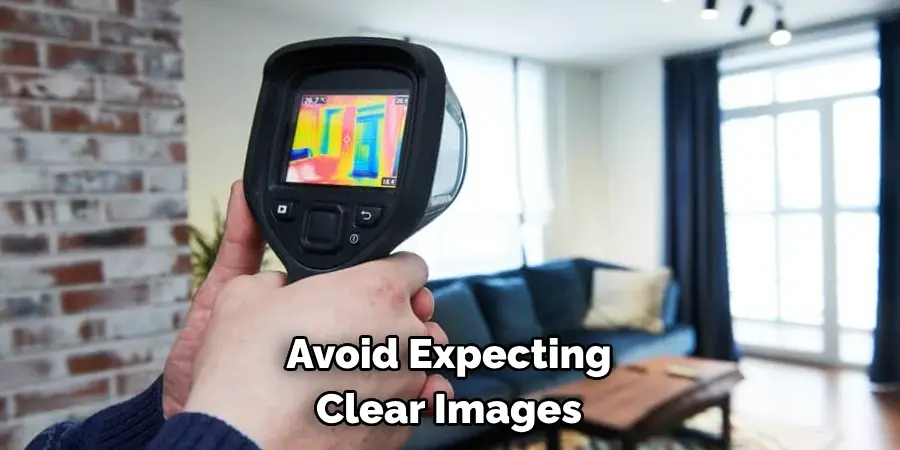
Conclusion
When it comes to an infrared camera’s capability of seeing through curtains, several factors must be considered. Suppose the curtains deal with radio frequency technology or have a metallic lining. In that case, an infrared camera can transmit its signals and create similar results as if the curtains were absent.
Additionally, if the curtains lack these elements and are most commonly made up of cotton and rayon, they may prevent the thermal detection of objects. Thus, based on your situation, it is important to know whether infrared cameras can see through the curtains before you make any purchases. For more details about which infrared cameras can see through specific materials such as curtains, speak to an expert who can guide you on which products may best suit your needs.
Hopefully, the article on can infrared camera see through curtains has provided you with valuable information and tips to make the most out of your infrared camera. Happy detecting!
You can check it out to Hang Curtains on Windows With Crown Molding

